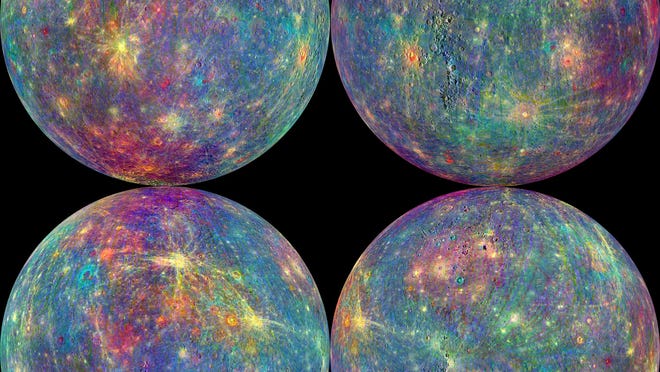There’s a new moon king in our solar system: 12 new moons were discovered around Jupiter, which makes it the planet with the most moons.
Jupiter is already the biggest planet in our solar system. It used to be known as the planet with the second-most moons with 80, trailing only Saturn with 83.
Astronomers using telescopes in Hawaii and Chile in 2021 and 2022 were able to spot the moons and report them to the International Astronomical Union’s Minor Planet Center. Astronomers then followed up the observations to make sure the moons orbit the planet, and that was recently confirmed.
Scott Sheppard of the Carnegie Institution for Science, who was part of the discovery team, posted the findings online.
James Webb Space Telescope: Webb telescope reveals icy space cloud containing the ‘building blocks of life’
Habitable planet? NASA just found a planet almost the size of Earth and it’s in the habitable zone of a star
What are Jupiter’s newly discovered moons like?
Sheppard told The Associated Press the moons range in size from .6 miles to 2 miles in diameter, but only half of them are big enough – at least 1 mile in diameter – to have a name.
The moons also take a much longer time than ours to orbit its planet. Sky and Telescope reported all of the newly discovered moons take more than 340 days to orbit Jupiter, and nine of them take at least 550 days. By comparison, our moon takes about 27 days to orbit Earth, NASA says.
How many moons does each planet have?
The discovery gives Jupiter 92 total moons, the most of any planet in the solar system. Counting the new moons, here’s how many moons each planet has, according to NASA (which has not officially recognized Jupiter’s new moons):
- Mercury: 0
- Venus: 0
- Earth: 1
- Mars: 2
- Jupiter: 92
- Saturn: 83
- Uranus: 27
- Neptune: 14
Sheppard, who has been part of past moon observations on Jupiter and Saturn, believes there are moons orbiting Jupiter and Saturn that haven’t been discovered yet. He said both planets have small moons believed to once be bigger moons that collided with space debris like asteroids.
What’s everyone talking about? Sign up for our trending newsletter to get the latest news of the day
Missions to Jupiter moons
The discovery comes as space agencies are preparing to observe the planet and its moons.
The European Space Agency will be launching its Jupiter Icy Moons Explorer, Juice, in April to observe the planet and its three large ocean-bearing moons – Ganymede, Callisto and Europa – with the goal of characterizing the moons “as both planetary objects and possible habitats.”
In October 2024, NASA plans to send its Europa Clipper orbiter to observe the planet and its moon Europa. The moon is believed to be mostly water ice and have twice as much water as Earth, and there is evidence of an ocean of water or slushy ice beneath the surface. The goal is to see whether Europa could be suitable for life.
Contributing: Marcia Dunn, The Associated Press
Follow Jordan Mendoza on Twitter: @jordan_mendoza5.


